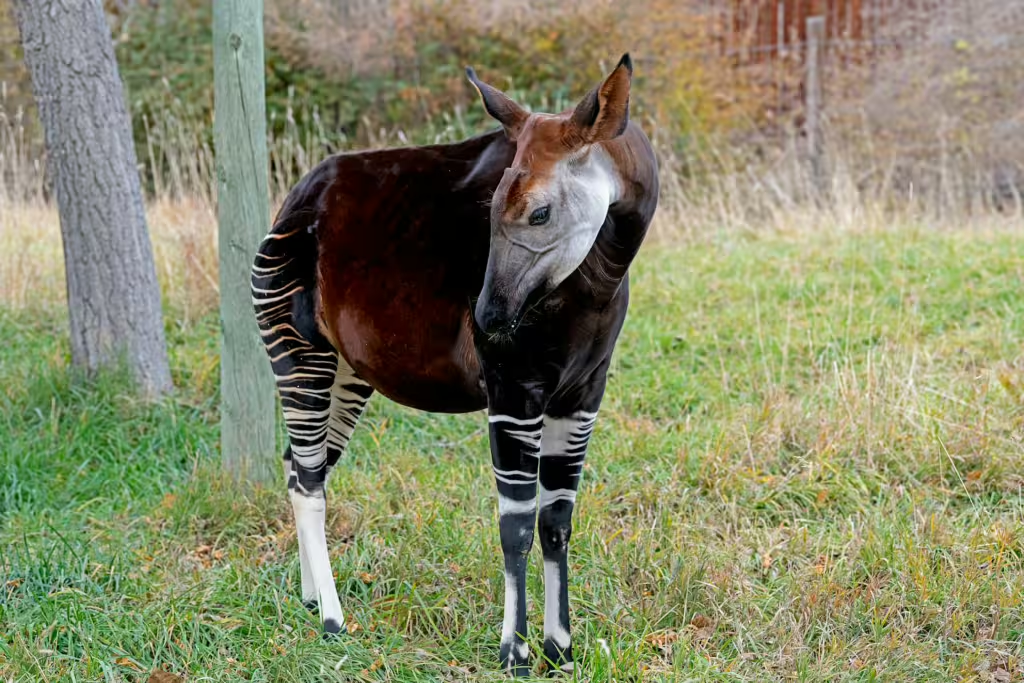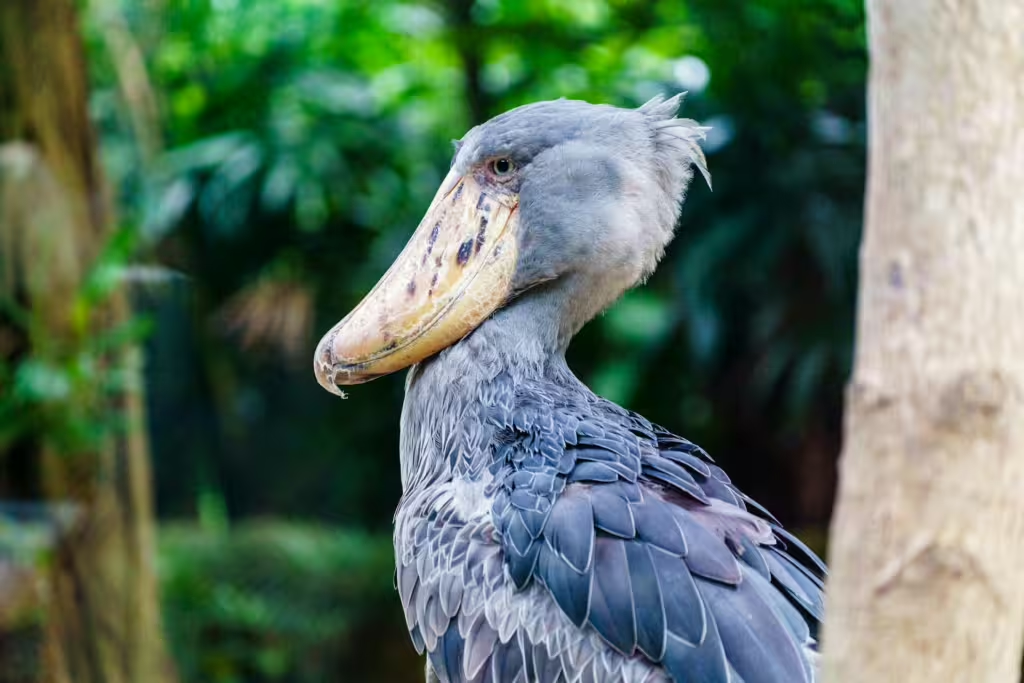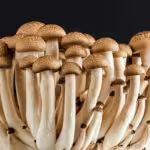Deep in the heart of Africa, lies a primordial world that has fascinated explorers and naturalists since time immemorial. Today, our World Tour takes us to that very place, to an ecosystem that, like the Amazon, is critical to mitigating the slow but cataclysmic effects of climate change. We are speaking of course, of the Congo Basin. Often referred to as a the “lungs of Africa,” the Congo is a massive swathe of rainforest set across six African countries.
Like so many crucial ecosystems in our world today, this 500 million acre territory is both vital to the survival of countless species and under siege from a destructive mix of logging, mining, poaching, and as always, climate change. And though the Congo is a vital resource and a lifeline for the people of the Democratic Republic of the Congo (DRC), Republic of the Congo, Cameroon, Central African Republic, Equatorial Guinea, and Gabon, the care that we as a species has taken with it, leaves something to be desired.
Within the Congo’s rivers, swamps, and dense canopies lies an astonishing diversity of life. Iconic animals like elephants and lowland gorillas are but a few of the remarkable denizens of this astonishing rainforest and their presence is punctuated by an array of vibrant birds and cryptic reptiles.
In this article, we will travel to the Congo Basin so that we can explore the incredible animals that call it home. At the same time, we will discuss the many challenges this ecosystem faces, as well as the impressive efforts that are being made to conserve one of the planet’s last great wildernesses.

The Landscape of the Congo
To say that the Congo Basin merely an understatement is something of an understatement. In reality, the region is a beautiful is a tapestry of ecosystems: dense lowland tropical forest, swamp forests, savannas, and a skein of rivers that twist through the landscape. The Congo River itself is the second-largest river in the world by discharge volume; only the Amazon is larger. The point being, that the sheer scale of diversity of habitats within the Congo basin is home to a wide range of animals, and probably twice as many plants, fungi, and assorted other lifeforms.
Mammals of the Congo
Many of the most famous denizens of the Congo are mammals and sadly, many of them also happen to be threatened or endangered for one reason or another.
Western Lowland Gorilla
Human beings are fascinated by gorillas. Perhaps it is because they are so similar to us in so many ways. Whatever the reason, most of the world’s gorilla species hail from the region in or around the Congo. The western lowland gorilla dwells in the Congo, traveling around the jungle in family groups led by a dominant silverback male. It is a herbivorous animal, feeding on leaves, fruits, and stems, which means it plays an important role as a seed disperser in the Congo ecosystem. Though the western lowland might be the smallest of the gorilla subspecies, it is also the most numerous. That said, it is still considered critically endangered.
African Forest Elephant
Another forest-dwelling relative of a larger African cousin is the African Forest Elephant. This animal is not only more elusive than its relatives in the savanna, it is also kore endangered thanks to the ivory trade. It is estimated that central Africa lost an astonishing 60% of its forest-dwelling elephants between 2002 and 2011. This number is particularly tragic when one considers that elephants are ecosystem engineers, mega-sized gardeners whose behaviors and feeding habits literally shape the land.
Okapi
The shy and solitary okapi is one of the most iconic creatures in the Congo Basin. It is endemic to the region, meaning it can only be found in this one place on Earth. With its velvety dark coat and zebra-like striped legs, the “African Unicorn” looks like something straight out of legend. Sadly, okapis are now listed as endangered due to habitat destruction and hunting, but there is hope! The Okapi Wildlife Reserve, a UNESCO World Heritage site, provides a refuge for this enigmatic and singular species.
African Leopard
It isn’t only herbivores that dwell in the Congo. In fact, some of the most ferocious predators in all of Africa live high in the canopy or deep in the brush. Take the elusive African leopard, which has a darker coat than it’s relatives in the savanna. These big cats are apex predators of the ecosystem and thus are vital for maintaining balance among the jungle’s many herbivore populations. Yet even leopards face threats from poaching and habitat encroachment by humans.
Birds of the Congo
African Grey Parrot
Many parrots are renowned for their intelligence and ability to mimic human speech, but the African grey parrots flaps a cut above the rest. These brilliant birds are native to Congo’s forests, where they play an important ecological role as seed dispersers. Sadly, their popularity makes them one of the most heavily traded birds in the illegal pet trade. Their dramatic decline over the past decades has not only rendered them as Endangered on the IUCN Red List, but has had a widespread effect on the growth patterns of certain plant species that rely on them for seed dispersal.
Shoebill
The shoebill looks like something out of a Jurassic Park movie. With its massive, shoe-shaped bill, this unmistakable bird is quite a sight to behold when one is walking through a Congo swamp. Unlike the parrots, this bird is fully predatory, feeing on fish, frogs, and lizards. While the shoebill is not endemic to the Congo, it has made its way into the ecosystem, filling a vital predatory role in a place that may have to learn to adapt in the face of habitat degradation.
Reptiles and Amphibians
Gaboon Viper
The Gaboon viper is one of the largest venomous snakes in the world and has one of the most painful, toxic bites of any snake. It is native to Congo’s forests, where it lies, half-buried and camouflaged in leaf litter, waiting for the perfect opportunity to strike. Most of the time, however, it won’t strike at humans. It is actually a surprisingly calm snake and prefers to ambush and feed on more easy-to-digest prey like rodents, frogs, and other small critters.
Goliath Frog
The goliath frog can be found in waterways all throughout central Africa, including parts of the Congo Basin, is the largest frog on Earth—reaching up to 13 inches in length and weighing in at a whopping 7 pounds. Unlike many frogs, which breed and then skedaddle, the goliath frog actually builds a nest for its young and will even move rocks around to protect the nest from predators.

Conservation Challenges
There are a number of destructive practices currently affecting life in the Congo Basin. First among them is deforestation, a problem which similarly affects other vital world ecosystems like the Amazon Rainforest. It doesn’t matter whether that logging is legal and meant for farming or plantations, or illicit, it still poses the greatest threat to the plants and animals of the region; as well as all those people who depend on the rainforest for their survival.
Mining is similarly problematic. Humans delve deeply and greedily into the ground in search of cobalt, coltan, and diamonds without surcease. And while both lumber and those other resources are economically important to the people of the Congo, their collection is devastate the natural habitat, polluting the rivers, and fueling violent conflict within the region.
Poaching is yet another problem and whether humans are hunting for bushmeat, exotic pets, or animal parts like horns, tusks, and pelts, the result is the same. So many rare and wonderful species are killed for human greed and their loss is absolutely demolishing the natural balance of the Congo. We also cannot forget climate change, which alters weather patterns in the area and has already affected flooding, rainfall, and temperature.

True Investigator Says…
As you can see, though it has seen its own share of damage and tragedy over the years, the Congo Basin remains a place of wonder, mystery, and immeasurable global importance. Each of the astonishing animals that calls this place its home has a role to play in the circle of life, as do the countless species of flora. Sadly, the treasures of the Congo are far from inexhaustible. Despite the conservational efforts of many in the region, the pressures and presence of human activity continues to threaten to unravel this ancient hub of biodiversity.
Fortunately, international cooperation, the dedication of local communities, and the scientific community are doing everything they can to ensure that the Congo can continue to be a sanctuary for wildlife and a stabilizing force for the global climate. In the end, we must remember that protecting environments like the Congo is not just a concern for the local population—it is a responsibility for all of humanity, one that will ensure our own continued existence on this planet for many eons to come.
Discover more from TrueInvestigator
Subscribe to get the latest posts sent to your email.


